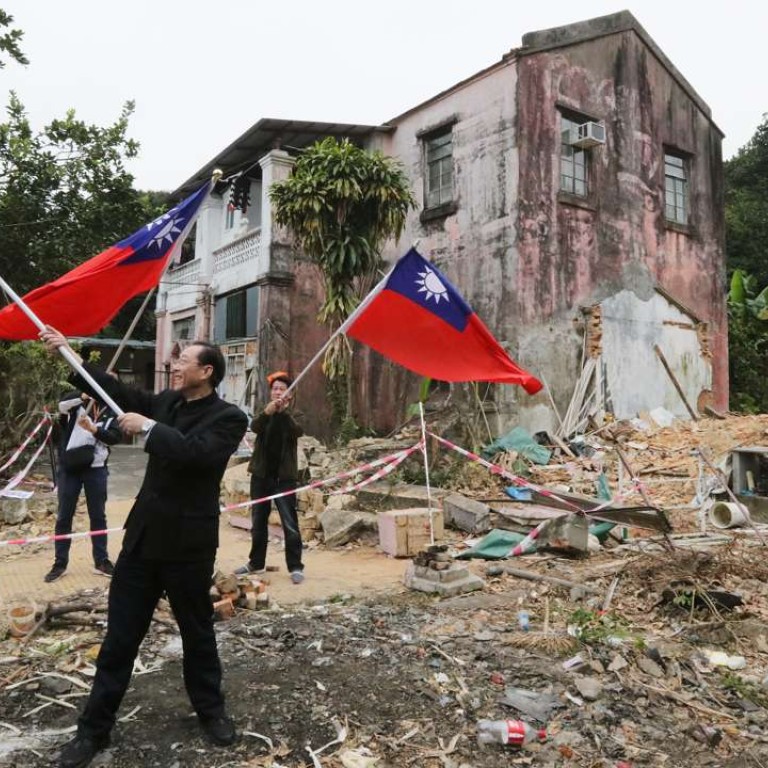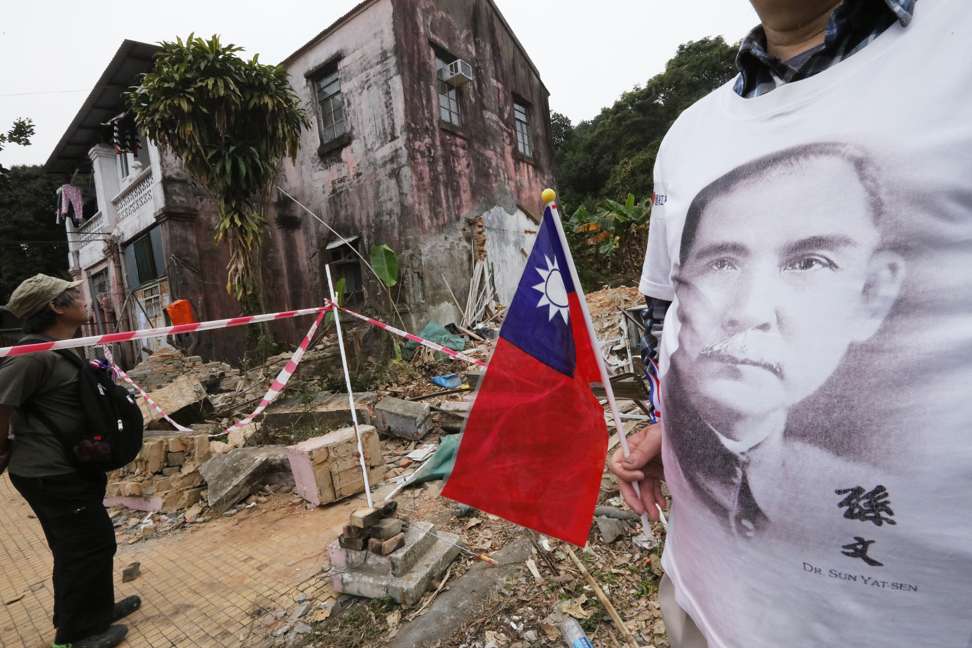
Historic Hong Kong Red House may have just escaped the wrecking ball
Structure in Tuen Mun – said to be Sun Yat-sen’s secret revolutionary base – is about to be declared a proposed monument, meaning no alterations can be made for a year
Hong Kong’s historic Red House, widely thought to be a secret base for revolutionary and founding father of modern China Dr Sun Yat-sen, may have narrowly avoided the wrecking ball under its new owner.
A Development Bureau spokesman said on Thursday that it would declare the two-storey, red brick house in Tuen Mun a “proposed monument”, meaning it would be legally protected from alterations and demolition for up to a year.
Late last month, 18 residents received eviction notices and had their water supply cut off and some of the site’s surrounding outer walls were torn down.
Watch: Saving Hong Kong’s cultural heritage
The spokesman said a notice would be published in the Government Gazette to declare the Red House – known as hung lau in Cantonese – a proposed monument “as soon as possible”.
The Red House, which is thought to have been built between 1905 and 1910, is currently designated a grade one heritage site, which means every effort should be made to preserve it if possible, although it is not legally protected from the threat of demolition.

The site served previously as the revolutionary base from which Sun plotted uprisings in Guangzhou against the Qing dynasty in the 1900s, according to Desmond Hui, a social science professor at the Hang Seng Management College.
There are disputes over whether the Red House is the original building where Sun engaged in revolutionary plots. “When Sun Yat-sen was plotting the revolution, he got support from businessmen in Hong Kong, including Li Ki-tong, who was the owner of this house,” he said. Li was a member of the anti-Qing revolutionary group Sun founded, the Revive China Society.
A few Taiwan-affiliated groups had originally been in discussion with the mainland owner – who purchased the site last November for HK$5 million – to buy and protect it, according to Tommy Chang Juo-ming, chairman of the Hong Kong and Macau Taiwanese Charity Fund.
But the government stepping in to protect the site legally was the “ideal situation”, Chang said.
There had been fears the new owner had political intentions behind purchasing the site, one of the rare places in Hong Kong that flies the flag of Taiwan, which is seen by Beijing as a renegade province.
Although Sun is revered on the mainland and in Taiwan and Hong Kong, his role as the first president and founding father of the Republic of China – now the official name of Taiwan – is still politically sensitive to the government in Beijing.
But Hui said Sun’s revolutionary work was also “very important to the history of the Communist Party”.
“I don't think there is any partisan division over the significance of this historic event,” he said.
“No matter if it’s the Republic of China, the People’s Republic or Hong Kong, the role Sun played in establishing a republic after dynastic rule is part of our collective history,” Chang said. “This site is one we all need to protect.”
“If it had been destroyed, we would have lost a part of our history,” Chang said. “How would we explain that to previous and future generations?”
The Antiquities Advisory Board – the authority overseeing heritage sites and monuments – previously said the site did not reach the “high threshold” for a monument, as there was no concrete proof the building was built before 1911.

Its grade one heritage status was granted in 2009 by factoring in its “collective memory” rather than direct relevance to revolutionary activities.
But former board member Ko Tim-keung said many of the panel’s members had “relatively little knowledge” of Hong Kong’s history.
A local historian himself, Ko said the government probably believed the house was built in the 1920s instead of in the early 1900s.
“A 1920s building would most probably not have been built with only wood and bricks,” he said. “Cement had been used extensively by then. The style of the building does not look like a 1920s building”.
Community activist Yuen Chi-yan criticised the current heritage grading system for being a “paper tiger” that did not fully protect historic buildings from alteration and demolition.
Yuen said the system was an “administrative rating” compared to Britain where owners had to consult the government before developing or altering historically graded buildings.
“It’s like telling people where you can take good photos rather than protecting the buildings,” he said.
PARLOUS STATE OF PRESERVATION
Hong Kong currently has an administrative grading system – grades one, two and three – to assess the historic value of individual buildings for conservation purposes. But only those declared statutory monuments are legally protected from alterations or demolition. As of last December, 944 historical buildings had been graded, with most of them being privately owned, meaning their fate is in the hands of the owners.
Red House
Location: Castle Peak, Tuen Mun
Year of Establishment: Not earlier than 1905
Heritage Grading: To be declared proposed monument
Status: Legally protected from demolition for a year once the government declares it a proposed monument
Background: It is believed to be a secret base for revolutionary and founding father of modern China Dr Sun Yat-sen ahead of the 1911 Chinese revolution
King Yin Lei
Location: 45 Stubbs Road, Mid-Levels
Year of Establishment: 1937
Heritage Grading: Declared monument
Status: Legally protected from demolition
Background: It was built by notable merchant and philanthropist Shum Yat-chor and his wife , symbolising the rise of the Chinese merchant class.
Ho Tung Gardens
Location: 75 Peak Road, The Peak
Year of Establishment: 1927
Heritage Grading: Grade one. The government had considered declaring it a statutory monument, but the high price of preservation forced it to abandon the plan
Status: It was demolished in 2013
Background: Built by businessman Sir Robert Hotung, the first non-European permitted to live on The Peak
Haw Par Mansion
Location: 15A Tai Hang Road, Causeway Bay
Year of Establishment: 1935
Heritage Grading: Grade one
Status: The mansion remains, but the garden was demolished
Background: The mansion together with its private garden were built by Aw Boon Haw, a Burmese Chinese entrepreneur and philanthropist best known for introducing the famous pain-relieving ointment Tiger Balm


